
QUODITCH EDUCATION DEVON
QUODITCH MOOR NATURE RESERVE
DRAGONFLIES AND DAMSELFLIES
|
QUODITCH EDUCATION DEVON |
QUODITCH MOOR NATURE RESERVE DRAGONFLIES AND DAMSELFLIES |
|
|
|
|
| We have quite a few different dragonflies and damselflies at Quoditch, not all of whom have, as yet, allowed us to photograph them. Here are some that we have seen. |
| DRAGONFLIES |
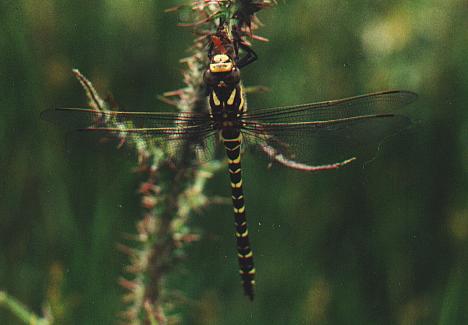 |
This is a Golden Ringed Dragonfly (Cordulegaster Boltonii). This is found at Quoditch from June to August. It has a wingspan of up to 105mm and a length of 125mm. You can't miss it when it flies past! It lays its eggs in the beds of fast-flowing streams. We found this one in field one about half a mile from the stream. In November 2007 one of our friends found one on the pavement in the middle of Plymouth! |
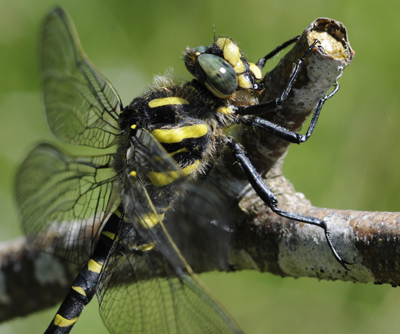 |
Here is a side view of one that we found in Field 3 in July 2008 |
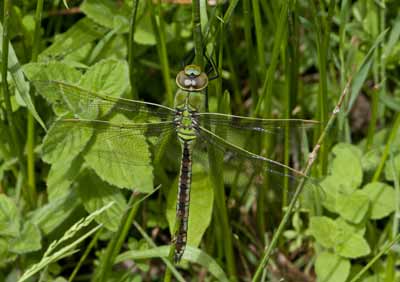 |
At last after many years Maureen has managed to get us some super pictures of this teneral Emperor Dragonfly (Anax Imperator) |
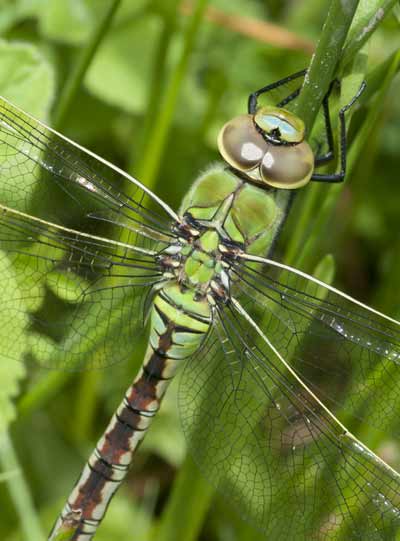 |
Here's one of her close up shots |
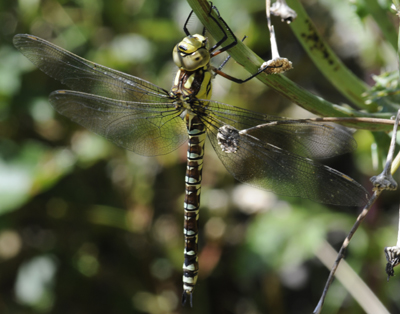 |
In October 2001 a Southern Hawker (Aeshna cyanea) was too busy flying around field three to stop and pose and again in August 2004 a male Southern buzzed around us trying to drive us off, but did not settle.. However, we were luckier in July 2008 when this one was perched right by the front gate waiting to have his portrait taken. There was also another in Field Four on the same day. |
|
DAMSELFLIES Damselflies tend to rest with their wings folded. Some of them are very difficult to tell apart and you have to be able to see the various bands and markings on their bodies to spot the differences. |
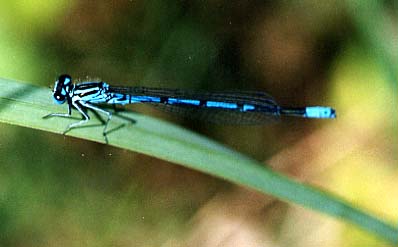 |
This is the Common Coenagrion (coenagrion puella) also referred to as the Azure Damselfly. They are vividly blue and look very delicate as they fly around. We often see them hovering above the grasses in field two. They are reminiscent of Neon Tetrad fish in an aquarium. |
| This one , taken in May 2004, has much less blue on it. Possibly a sign of immaturity? |
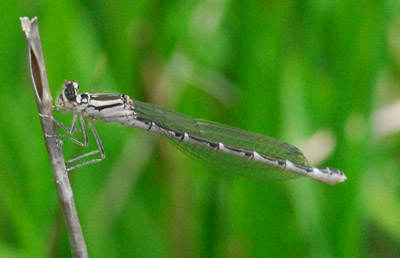 |
Here's another in June 2007. |
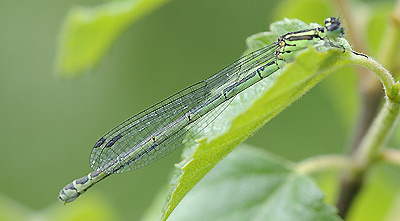 |
Here is the female Azure Damselfly photographed in June 2009. This can be identified by the two short black lines on the side of the thorax (Powell, 1999) |
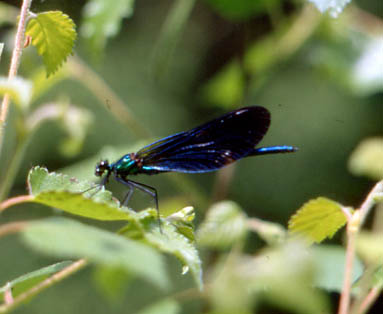 |
This, we believe to be a male Beautiful Demoiselle (Calopteryx virgo). We found this one in field six in June along with three females (see below). Usually the beautiful demoiselle is greener than this one which was a vivid deep blue. We have since seen several in this field and they are all this beautiful blue . |
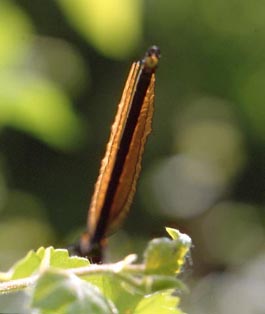 |
This is one of the females that we found accompanying the male. Unfortunately, she would not pose for us. |
|
This
one was a lot more co-operative! You can identify the female of this species
by the white patch (psuedopterostigma ) on the wings. Our thanks to George Mahoney of the British Dragonfly Society for his help in identifying this damsel for us. |
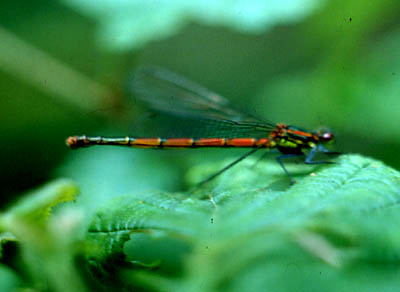 |
This is a Large Red Damselfly (Pyrrhosoma nymphula). We found this female in field six in June. It is quite tame compared with other damsels and sat quite still for us to photograph it. |
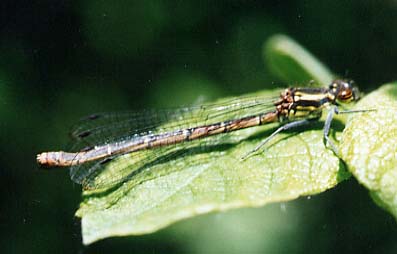 |
We found this one in July 2001. Vincent Kalkman of Nederland . naturalis - National Museum of Natural History in the Netherlands tells us that this one, too, is a female Pyrrhosoma nymphula. The yellow colouring is due to the immaturity of this female. |
| Here are a couple more variations. These appear to us as females but of the melanotum variety. | |
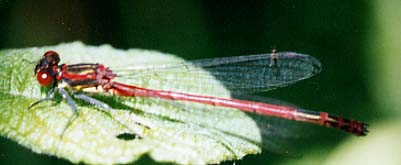 |
Here is a male. We found this one in Cookworthy Woods a couple of miles north of Quoditch in July 2001 |
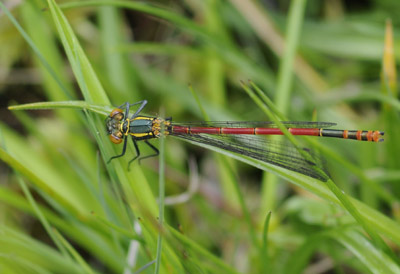 |
This one appeared very briefly in field four in May 2009 |
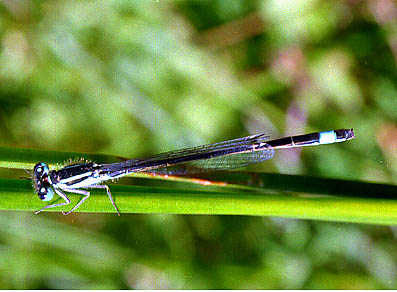 |
This is the Blue Tailed Damsel Fly (Ischnura elegans). It is very common over the whole of the UK and can be found from May until early September. This one was hovering in the grasses in the middle of field one. |
|
CHASERS
|
|
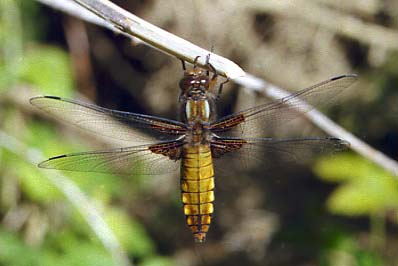 |
This is a female BROAD BODIED CHASER (Libellula depressa). We found this one on a bramble bank in Field One in the early part of June. It can be found over the South of England, the Midlands and Wales. It's not uncommon, but it took us four years to find one. |
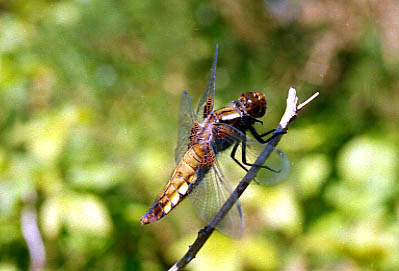 |
Here is a side view. Often it will drop its wings well below the horizontal. |
| The male has a blue body instead. It took us another three years to spot this one in June 2004 |
|